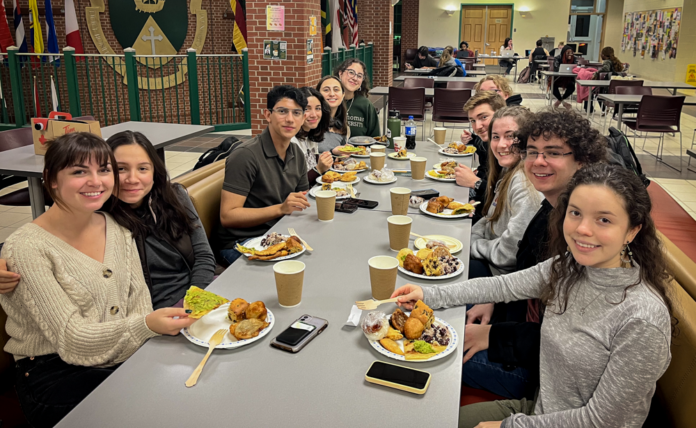

On the night of Nov. 16, the St. Thomas University International Students Association (STUISA) hosted the annual Food Fest at Sir James Dunn Hall.
The Food Fest offered an opportunity to discover new culinary experiences while connecting with different cultures.
Alberto Chávez, a third-year student from Ecuador and president of STUISA, said the event had representatives from North, Central and South America, Europe, Africa and Asia.
“I made sure when we were doing this type of event with food that each region is represented,” said Chávez.
To him, the best way to share one’s culture is through food since it makes it easier for everyone to engage with one another.
“It was the perfect combination of raising funds in a fun way and you can show and demonstrate your culture in an accessible way.”
He added that getting to know new perspectives and having diversity on campus helped him have a better understanding of his path in life.
“I have met different people from different ages, different places and I have seen so many perspectives in life. I want people to always have the experience.”
Chávez said that inflation was one of the biggest challenges, besides “lack of commitment” from the audience.

He said that this was the first big event of this year’s STUISA team looking forward to the Multicultural Fair.
“This was the first trial to see how people are engaged in this… I also wanted to see how you know, different ideas, how can we improve?”
Ameri Suzuki, an international student from Japan, cooked spam musubi, a Japanese-Hawaiian fusion dish. This food brings her back to when she spent high school in Australia.
“When I was in Australia, my host mother, who was an Australian of Taiwanese background, made those for me,” said Suzuki.
This is not the first time Suzuki has introduced her food to different cultures, this is an experience where she “was representing Japan ray through the food.”
“I had a lot of people come up to me and say, ‘I loved your food’ and that made me happy.”
Suzuki used the example of the dish she prepared to highlight the importance of food as a means of cultural exchange.
“The history behind that is Japanese people after World War Two, we didn’t have a lot of food at that time, so a lot of them moved to Hawaii. In this context, it is a representation of how far the US and Japan have come,” said Suzuki.
Jacob Didychuk, a Canadian student, said that it was great to see “people wanting to show off what they bring to Canada.”
“I think it benefits [cultural exchange] very well having the international students show off what they’ve grown up on,” said Didychuk.
He said that he did not go to events like this one in the past years, but he is “glad because it’s not only eye, but it’s really important to understand where people come from.”
“I think it does, to make connections to with people that are from far ways away was interesting,” said Didychuk on how cultural exchange enriches his university experience.
